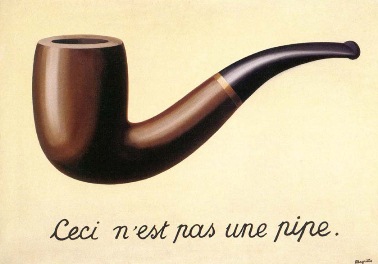
 |
| |
|
|
|
#1
| |||||||
| |||||||
| René Magritte René François Ghislain Magritte (21 November 1898 - 15 August 1967) was a Belgian surrealist artist. He became well-known for a number of witty and thought-provoking images.  Life Magritte was born in Lessines, in the province of Hainaut, in 1898, the eldest son of Léopold Magritte, a tailor, and Adeline, a milliner. He began lessons in drawing in 1910. In 1912, his mother committed suicide by drowning herself in the River Sambre. Magritte was present when her body was retrieved from the water. The image of his mother floating, her dress obscuring her face, may have influenced a 1927–1928 series of paintings of people with cloth obscuring their faces, including Les Amants, but Magritte disliked this explanation.[1] He studied at the Académie Royale des Beaux-Arts in Brussels for two years until 1918. In 1922 he married Georgette Berger, whom he had met in 1913. The Son of Man, 1964.Magritte worked as an assistant designer in a wallpaper factory, and was a poster and advertisement designer until 1926 when a contract with Galerie la Centaure in Brussels made it possible for him to paint full-time. In 1926, Magritte produced his first surreal painting, The Lost Jockey (Le jockey perdu), and held his first exhibition in Brussels in 1927. Critics heaped abuse on the exhibition. Depressed by the failure, he moved to Paris where he became friends with André Breton, and became involved in the surrealist group. When Galerie la Centaure closed and the contract income ended, he returned to Brussels and worked in advertising. Then, with his brother, he formed an agency, which earned him a living wage. Surrealist patron Edward James allowed Magritte, in the early stages of his career, to stay rent-free in his London home and paint. James features in two of Magritte's pieces, Le Principe du Plaisir (The Pleasure Principle) and La Reproduction Interdite. [3] During the German occupation of Belgium in World War II he remained in Brussels, which led to a break with Breton. At the time he renounced the violence and pessimism of his earlier work, though he returned to the themes later. His work was exhibited in the United States in New York in 1936 and again in that city in two retrospective exhibitions, one at the Museum of Modern Art in 1965, and the other at the Metropolitan Museum of Art in 1992. Magritte died of pancreatic cancer on August 15, 1967 and was interred in Schaarbeek Cemetery, Brussels. Popular interest in Magritte's work rose considerably in the 1960s, and his imagery has influenced pop, minimalist and conceptual art.[4] In 2005 he came ninth in the Walloon version of De Grootste Belg (The Greatest Belgian); in the Flemish version he was 18th. Philosophical and artistic gestures consummate technician, his work frequently displays a juxtaposition of ordinary objects in an unusual context, giving new meanings to familiar things. The representational use of objects as other than what they seem is typified in his painting, The Treachery of Images (La trahison des images), which shows a pipe that looks as though it is a model for a tobacco store advertisement. Magritte painted below the pipe "This is not a pipe" (Ceci n'est pas une pipe), which seems a contradiction, but is actually true: the painting is not a pipe, it is an image of a pipe. (In his book This Is Not a Pipe French philosopher and critic Michel Foucault discusses the painting and its paradox.) Magritte used the same approach in a painting of an apple: he painted the fruit realistically and then used an internal caption or framing device to deny that the item was an apple. In these Ceci n'est pas works, Magritte points out that no matter how closely, through realism-art, we come to depicting an item accurately, we never do catch the item itself - we cannot smoke tobacco with a picture of a pipe.[citation needed] His art shows a more representational style of surrealism compared to the "automatic" style seen in works by artists like Joan Miró. In addition to fantastic elements, his work is often witty and amusing. He also created a number of surrealist versions of other famous paintings. René Magritte described his paintings by saying, My painting is visible images which conceal nothing; they evoke mystery and, indeed, when one sees one of my pictures, one asks oneself this simple question, "What does that mean?". It does not mean anything, because mystery means nothing either, it is unknowable. المصدر: منتديات مدينة الاحلام magritte |
 |
| مواقع النشر (المفضلة) |
| |
|
Powered by vBulletin Version 3.8.7 Copyright ©2000 - 2024, Jelsoft Enterprises Ltd ترقية وتطوير: مجموعة الدعم العربى |